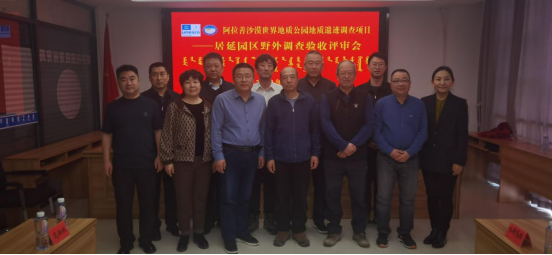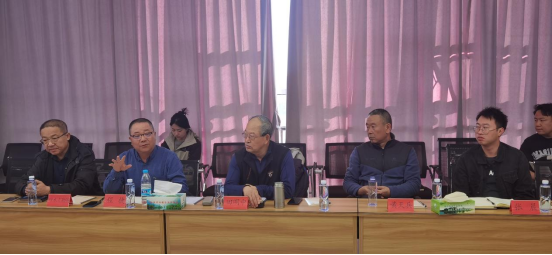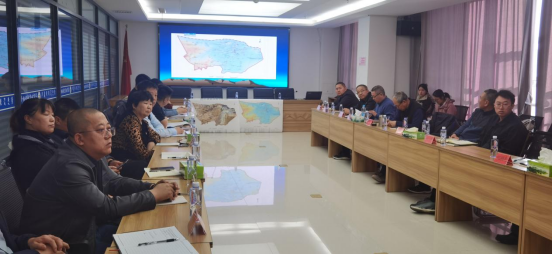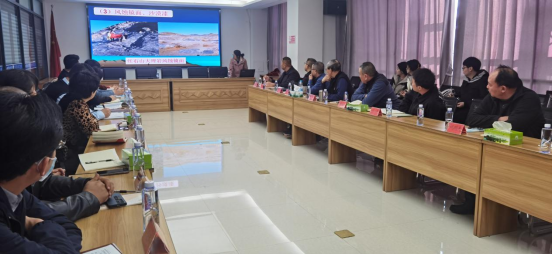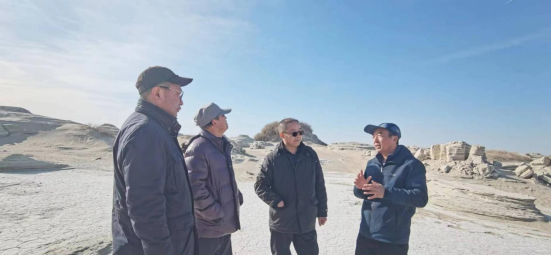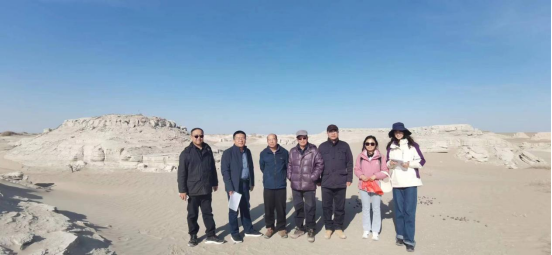On March 1, the geoheritage survey project evaluation meeting of Juyuan was held in Alxa Desert Global Geopark. The project was evaluated by experts including Professor ZHU Guoqiang, a doctoral supervisor from the Institute of Geology, Chinese Academy of Sciences, Senior Engineer WANG Zhong from the Inner Mongolia Geological Survey Institute, and Senior Engineer MA Feimin from the Inner Mongolia Natural History Museum. Approximately 30 participants from relevant departments in Ejin Banner of Alxa League, such as the local Government and Communist Party Committee, Forestry and Grassland Bureau, Culture and Tourism Bureau, and the Alxa Desert Global Geopark Administration, attended the meeting.
After conducting a field inspection, listening to the project presentation, reviewing the results of geological feature mapping and related documents, the expert panel found that the project team had fully leveraged their technical expertise. They reported that the team had successfully completed the geological feature exploration and data collection and processing within the Juyan Garden. The panel appreciated the high-quality geological feature data that had been achieved. Furthermore, they provided some constructive suggestions for improvements. The expert panel unanimously agreed that the project should pass the validation stage.
The findings of the project survey indicate that in Juyan, the eastern area is predominantly shaped by the Badain Jaran Desert, featuring primarily wind and sand landscapes. The central area is influenced by rivers, showcasing ancient lakes and Yardang landforms. The western region is affected by the Beishan fault zone, characterized by rock deformation and ancient biological fossils.
Moreover, there are a total of 8 geological structural heritage, 23 wind force geoheritage, 7 sites of ancient biological fossils, 8 mineral deposit sites, 13 remnants related to water bodies and their geological activities, 8 rock geosites, 27 human cultural geosites, and 7 natural landscapes.
Notably, important geological heritage include the Yardang landforms found around the Tian’ehu (the swan lake) and Tianshuijing (the sweet spring), as well as the ancient biological fossils at the Mazongshan site.
The outcomes of this geological survey validation have provided robust technical support for gaining a comprehensive understanding of the geological heritage within the Alxa Desert Global Geopark. This validation has thoroughly explored the scientific, aesthetic, and economic values of the geological heritage, contributing significantly to the conservation, scientific utilization, and development of these resources. It holds great significance for promoting high-quality tourism in the region, supporting the local economy, and advancing the rural revitalization strategy.
